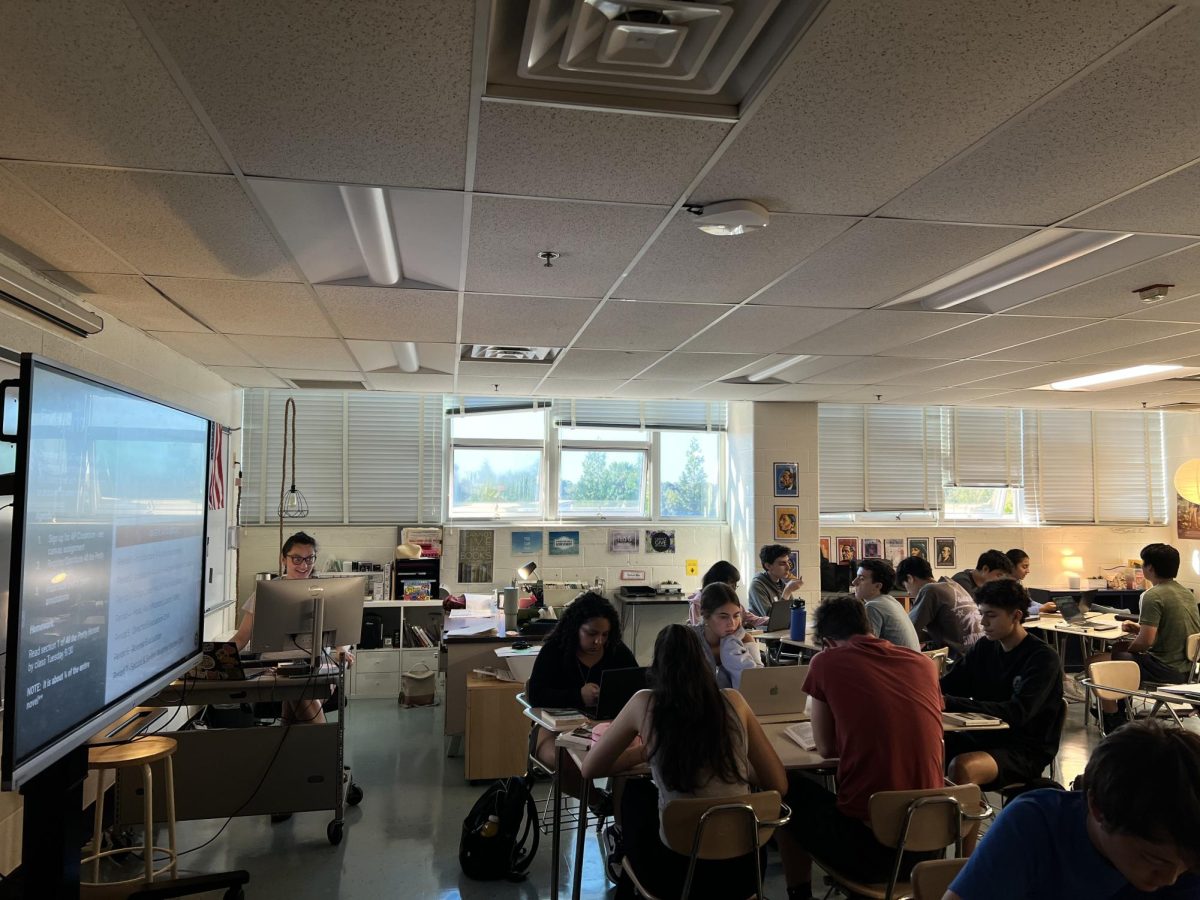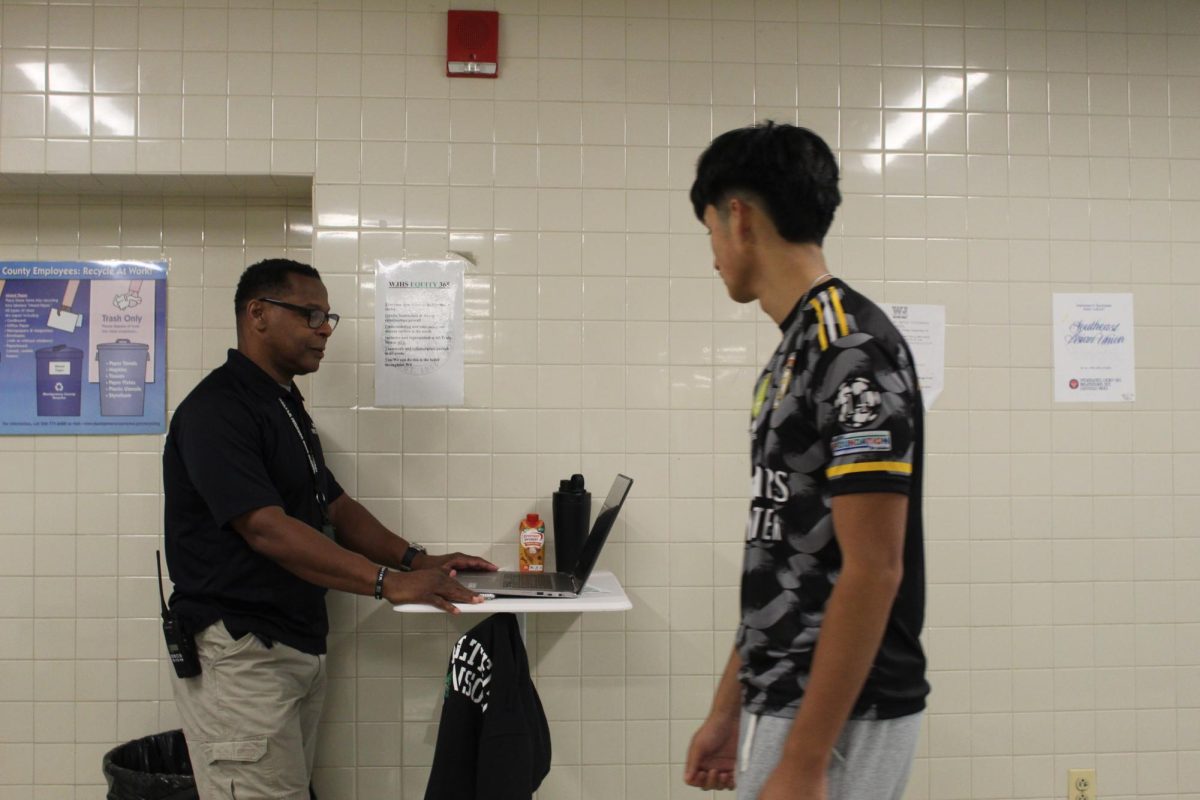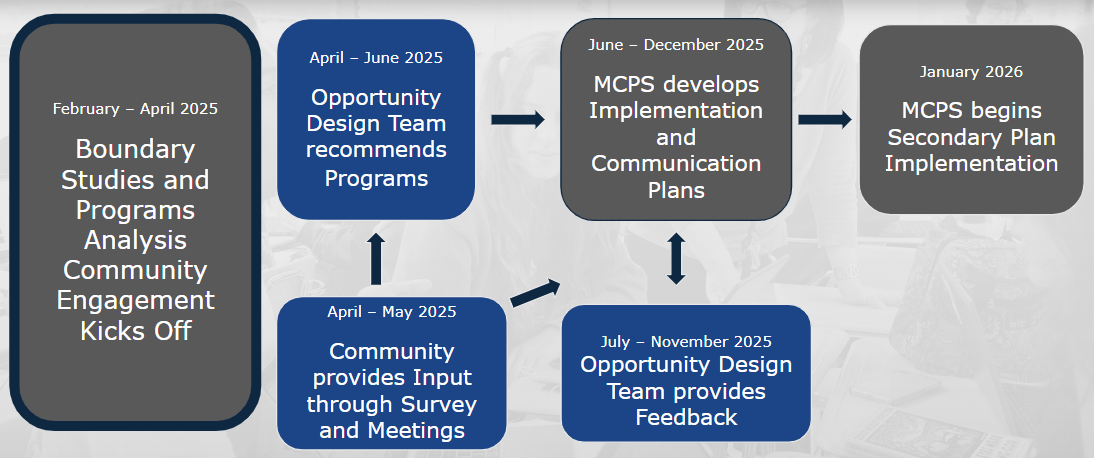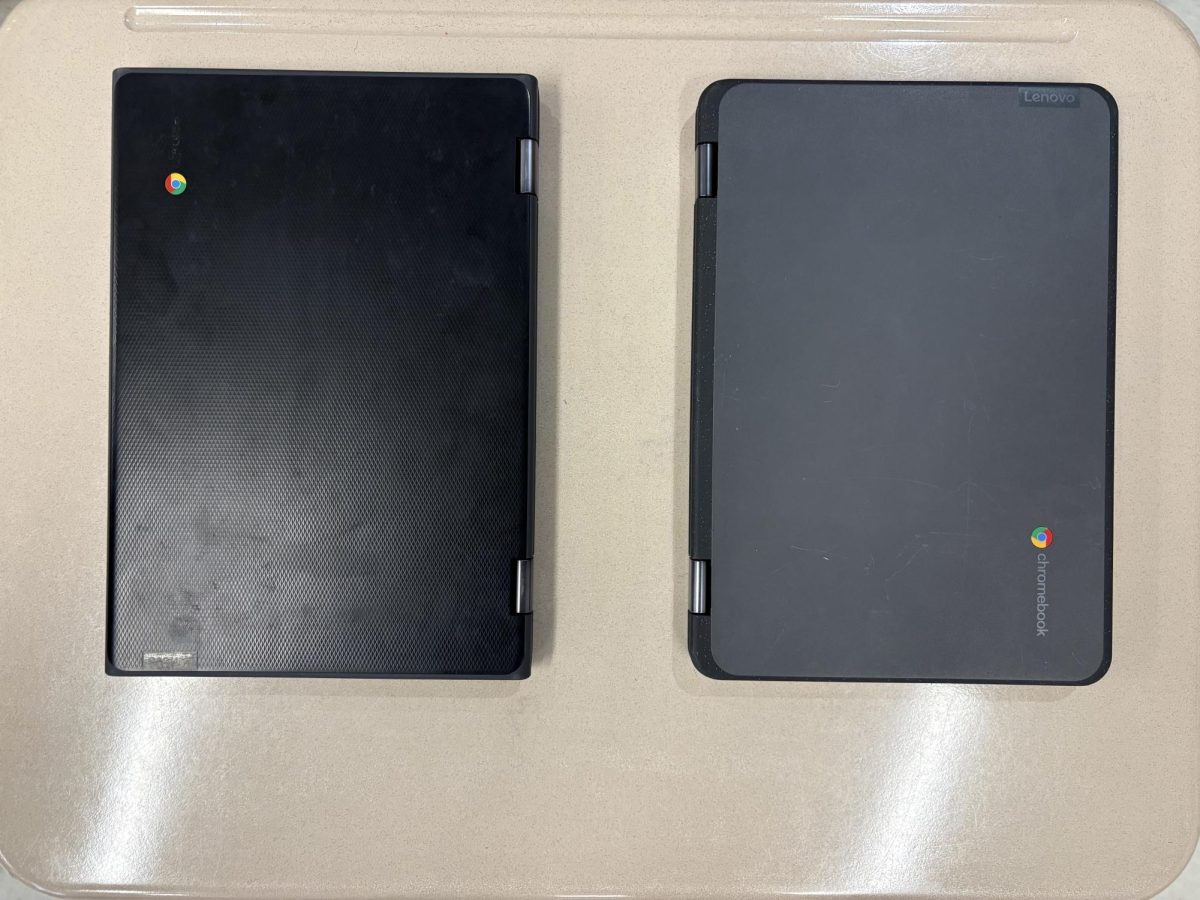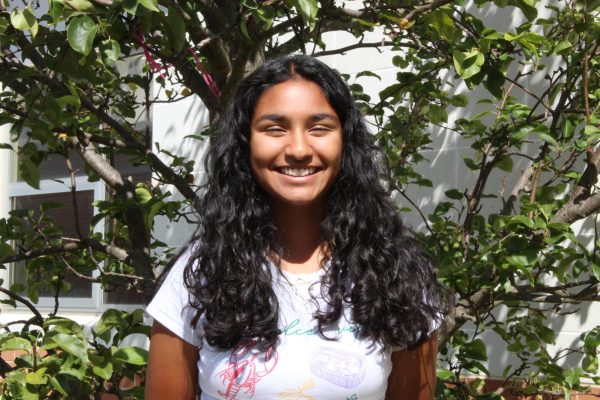The MCPS Board of Education released four initial boundary study options on Tuesday, May 27. These options come as a result of the ongoing boundary study, which MCPS has been conducting since Dec. 2024.
Each of the four options pushes to include a different priority factor from the county, such as demographic distribution, geographic proximity to schools, stability of school assignments, and facility utilization.
Consistent across all four options, Tilden Middle School students would be pushed into attending the newly built Woodward High School.
Option 1:
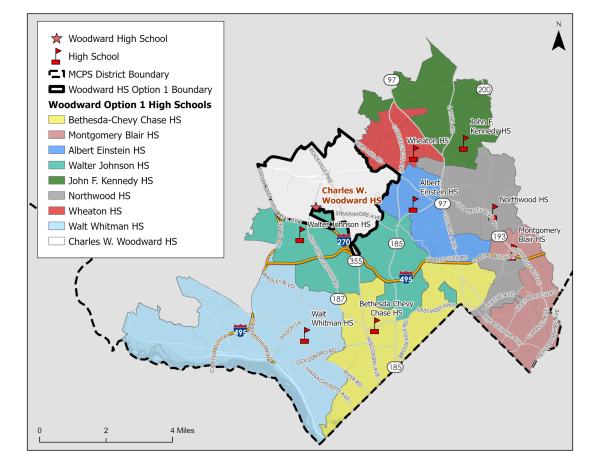
Option one emphasizes facility utilization. WJ’s boundaries would include portions of South Kensington and Chevy Chase, which are currently zoned to Bethesda-Chevy Chase High School. Under this option, most high schools in the county would operate at around 80% to 100% capacity. Montgomery Blair, John F. Kennedy, and Wheaton High School would all continue to exceed their 100% capacity limits.
With these proposed changes, WJ’s enrollment would decrease by approximately 1022 students by the 2030-31 school year, lowering the faculty utilization from 134% to 88.6%. Overcrowding would persist in numerous large schools, and the changes made would have a minimal impact on those that need population decreases the most. This option would also provide straight articulation from each elementary to their assigned middle school.
According to PTSA secretary and WJ cluster representative Deborah Kornbluth Berger, option one is receiving the most support from WJ families.
Option 2:
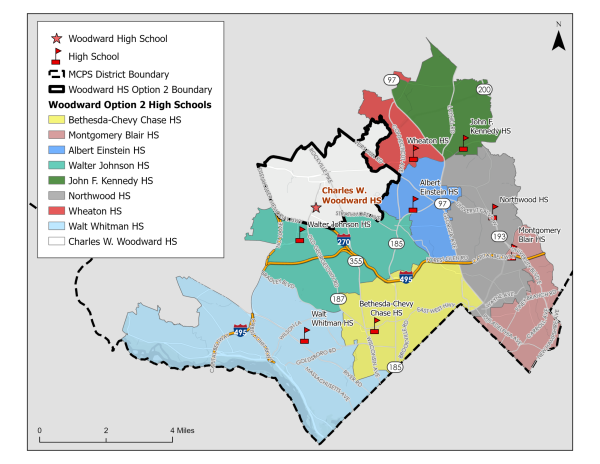
Option two prioritizes geographic proximity, hoping to decrease the travel distances for students between home and school. WJ’s zones would expand into South Kensington and a slight portion of Walt Whitman’s current boundaries. Compared to current patterns, this option would increase the amount of split articulation from elementary to middle schools. Additionally, the Northwood and Wheaton boundaries would also change, with some students from John F. Kennedy moving to Wheaton High School.
This plan does little to change the racial and socioeconomic makeups of many schools. WJ’s White population would increase by 7.9% while its African American, Hispanic and Asian populations would decrease by a combined 8.7%.
Option 3:
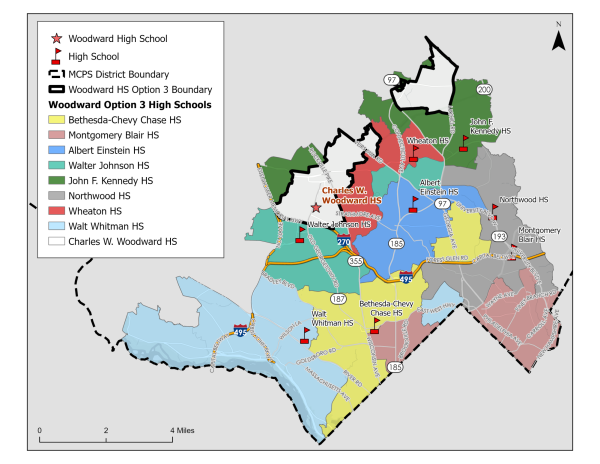
Option three strives for equal demographic distributions. Notably, this option pulls a portion of the existing Wheaton High School and Albert Einstein High School students into WJ’s population. With these changes, WJ’s Hispanic population would increase by an estimated 18.8%, along with its white population decreasing by 13%.
While many schools would improve their diversity percentages, of all the proposed options, busing would be expanded the most across the county. Portions of Wheaton and Albert Einstein would be bused to WJ as well as Bethesda-Chevy Chase to Montgomery Blair and Walt Whitman.
While this option raises concerns about travel distances, supporters agree that it’s a needed step towards promoting inclusivity and equality. Like option two, this set of boundaries would also cause more split articulation from elementary to middle schools.
Berger agrees that this option is receiving the least support from WJ families.
Option 4:
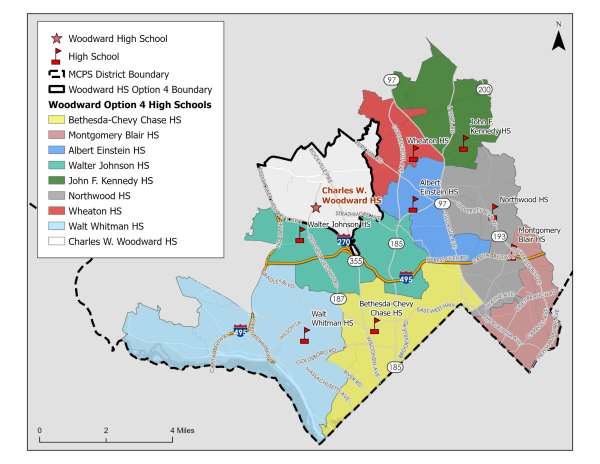
Option four is similar to option two, as it promotes closer geographic proximities. While most schools would be in the 80-100% range, WJ’s facility utilization would decrease to 77%, the lowest of all the options. This option leaves many schools, such as WJ, way underused, while other schools will continue to struggle with large facility utilization rates. For example, Wheaton would still be heavily overcrowded with a facility utilization percentage of 120.2.
Most schools would also maintain boundaries similar to their current ones, but diversity would decrease in many schools, including WJ. The African American, Hispanic, and Asian populations at WJ are projected to all decrease, accompanied by an increase in the White population by 10%.
Similar to options two and three, split articulation rates would increase across the county from elementary to middle schools.
Community Reactions:
WJ parents are concerned about the new boundary proposals. Some are even looking into other educational opportunities for their children, worried that the newly drawn boundary lines are not the best options for their kids.
“I’ve had numerous parents call me and tell me that they’re investigating private schools now,” Berger said. “The community want to be kept together and there are proposals to break up the WJ community.”
Next Steps:
While the main reason for the creation of Woodward is to curb issues of overcrowding, MCPS’ previous projections on the number of students attending new schools have been historically inaccurate.
“We want more accurate projections, including using all of the new residential units that have been approved,” Berger said. “Too many times schools have been opened, and within a few years, there has been overcrowding.”
The county has already held numerous Zoom meetings as well as virtual office hours where representatives explained the benefits of each option to community members.
“Community input is sought from multiple stakeholders and to obtain a broad representation from affected communities using multiple community outreach strategies,” MCPS wrote in the slideshow presented during its ‘Initial Options Preview’ meetings.
MCPS will continue to receive feedback on these maps from the community through outreach surveys and public engagement sessions, which they will then utilize to create a new set of options. The final boundary option, which will be presented to the MCPS Board of Education by the Superintendent, is expected to be released by Dec. of this year. If approved, changes will be seen beginning to be implemented in the 2027-28 school year, but won’t be fully in motion until the 2029-30 school year.
Initial Options Survey – Woodward Boundary Study: https://docs.google.com/forms/d/e/1FAIpQLSczWBlhaaM8vIgqrbFtRHn0LO3PlTKeqeynyEjUjHN-OyarWw/viewform



